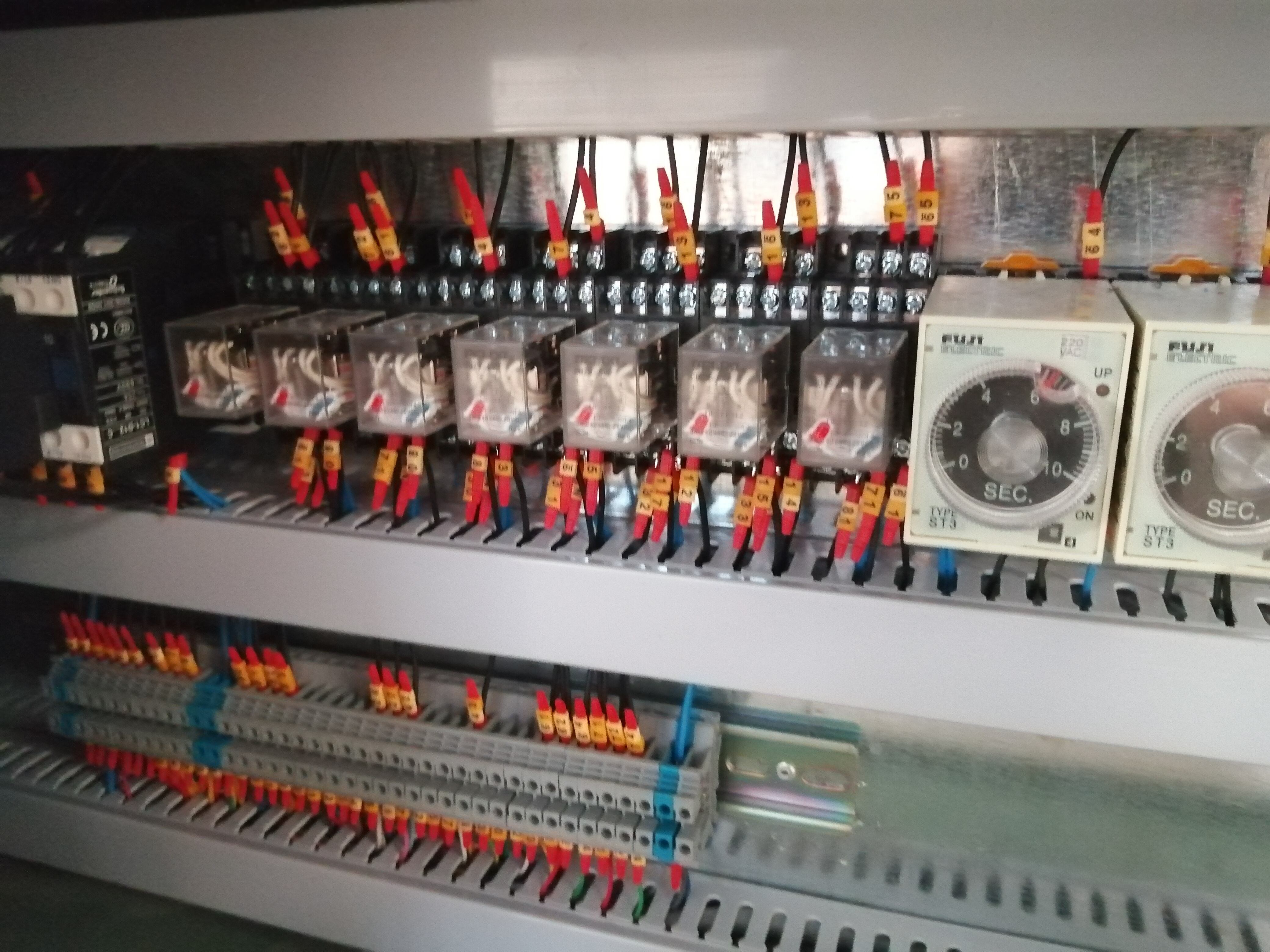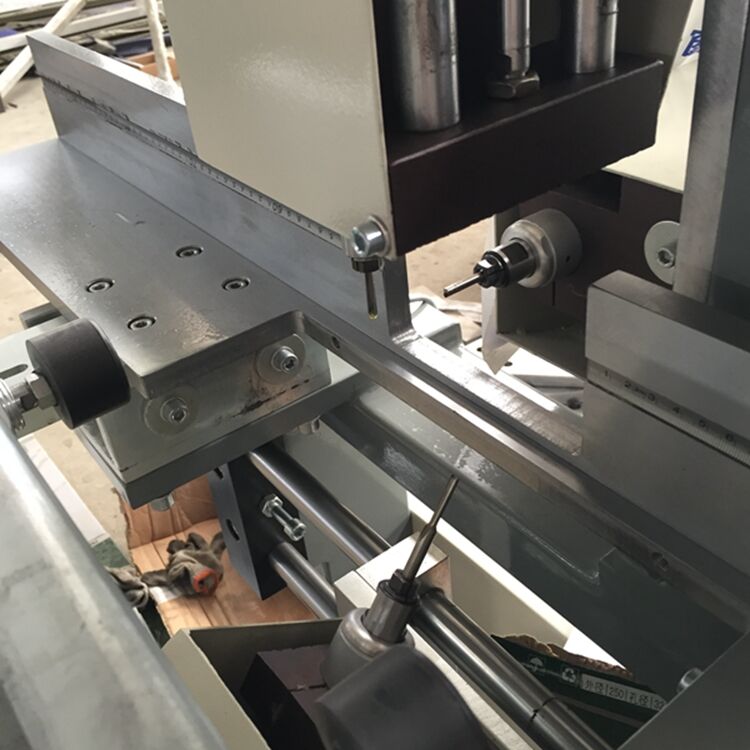Core Components of a Water Slot Milling Machine
Water slot milling machines integrate precision-engineered subsystems to achieve ±0.005 mm tolerances in high-volume production. Modern systems incorporate adaptive thermal compensation and AI-driven tool wear monitoring for 24/7 performance.
Critical Tooling Systems for Slot Precision
Carbide-tipped end mills with 3–6 flutes dominate slotting applications, with 3-flute designs optimizing chip evacuation in aluminum workpieces (80% adoption in aerospace). Hydraulic tool holders maintain 0.0001" TIR accuracy during deep-slot cutting, while ceramic-coated inserts extend tool life by 40% in steel machining.
Lubrication and Coolant Delivery Mechanisms
High-pressure coolant systems (1,000+ PSI) deliver 34% longer tool life in titanium applications versus flood coolant. Dual-channel nozzles target cutting zones and chip paths, reducing recutting incidents by 82%. Synthetic coolants with pH-stable formulations dominate 68% of industrial use for superior corrosion resistance.
CNC Controller Configuration Essentials
Closed-loop systems combine laser scales (0.1 μm resolution) with thermal compensation algorithms. ISO 230-3 compliant machines maintain 5 μm/meter accuracy despite temperature changes. Configurable G-code macros reduce cycle times by 23% when switching between slot geometries.
Water Slot Milling Machine Maintenance Protocols

Daily Cleaning Routines for Debris Prevention
Remove chips from spindle collets, guideways, and workholding surfaces using OSHA-compliant vacuums. Prioritize hardened steel fragment removal—75% of dimensional deviations originate from lodged swarf. Air-blast clean Z-axis columns before shutdown to prevent accelerated wear from alumina particles.
Bi-Weekly Alignment Verification Procedures
Check spindle perpendicularity every 14 days using laser interferometry (±0.001" max deviation). Monitor column-to-table parallelism through cross-grid encoder analysis. Document ambient temperature during calibration—compensate 0.00013 mm/°C for cast iron structures. Neglected alignment causes 68% of non-productive cutting.
Quarterly Bearing Replacement Schedule
Replace spindle bearings every 500 machining hours with these torque specs:
| Bolt Size | Torque (Nm) | Preload Tolerance |
|---|---|---|
| M10 | 35 ± 2 | 0.02 mm radial |
| M12 | 52 ± 3 | 0.03 mm axial |
| M16 | 100 ± 4 | 0.04 mm compound |
Apply Molykote HP-300 grease to extend bearing life by 300 hours. Digital torque wrenches prevent under-torque failures responsible for 41% of unplanned stoppages.
Diagnosing Water Slot Milling Machine Failures
Tool Chatter Analysis and Vibration Mitigation
Chatter reduces surface finish quality by 18–34% and accelerates tool wear. Monitor spindle vibrations at 800–2,500 Hz frequencies—where 72% of instability occurs. A 2022 vibration frequency study shows variable depth-of-cut strategies reduce chatter amplitude by 60% in aluminum.
Coolant Contamination Warning Signs
Key indicators include:
- Milky emulsion (pH <8.2)
- Visible bacterial sludge
- Tramp oil layers >3mm
Check viscosity weekly with #4 Ford cup viscometers. Replace coolant every 240 hours for cast iron machining—40% more frequent than steel cycles.
CNC Program Error Resolution
Follow this troubleshooting protocol:
- G-code validation (45% of errors)
- Work coordinate verification (30%)
- Tool offset cross-check (15%)
- Thermal compensation (10%)
Run new programs at 50% feed rate to prevent 92% of first-iteration collisions.
Optimizing Water Slot Milling Machine Performance

Adaptive Feeds/Speeds for Different Materials
Adjust parameters to material properties:
- Aluminum: 0.3-0.5 mm/tooth feed rates
- Titanium: 20% slower speeds for heat control
- Copper alloys: 30% higher coolant flow than steel
Vibration sensor calibration detects resonance from suboptimal settings.
Tool Path Simulation Software Comparison
| Capability | Benefit | Time Saved |
|---|---|---|
| Collision Detection | Prevents damage | 15-20% |
| Material Removal Analysis | Optimizes thin-wall stepovers | 25-30% |
| Thermal Modeling | Predicts workpiece distortion | 18-22% |
Cloud-based systems provide real-time deflection feedback during contouring.
Industry-Proven Water Slot Milling Machine Upgrades
Case Study: 34% Cycle Time Reduction Through Spindle Retrofit
A German manufacturer upgraded to a 24,000 RPM/40 Nm liquid-cooled spindle, achieving:
- 40% higher metal removal rates
- 62% less harmonic vibration
- 55% reduced spindle downtime
The retrofit delivered $18,000 monthly savings with a 5-month ROI.
FAQ Section
What are the benefits of high-pressure coolant systems in water slot milling machines?
High-pressure coolant systems provide longer tool life and reduced recutting incidents by effectively targeting cutting zones and chip paths.
How often should spindle bearings be replaced in a water slot milling machine?
Spindle bearings should be replaced every 500 machining hours to ensure optimal performance and reduce unplanned stoppages.
What is the importance of CNC program error resolution?
Effective CNC program error resolution prevents the majority of first-iteration collisions, ensuring smooth and efficient operation.

